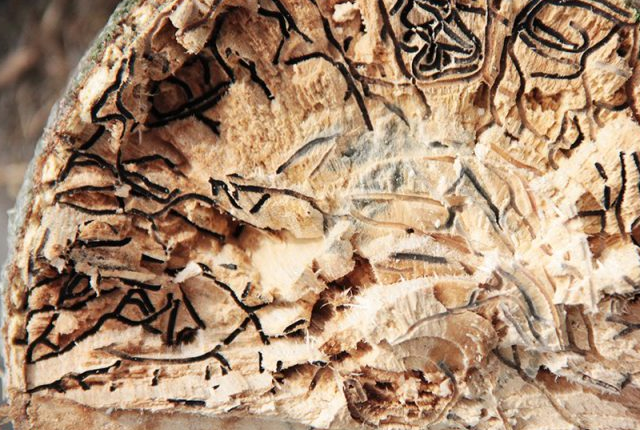Forest ecologists from SANParks’ Garden Route National Park are breathing a sigh of relief that, for now, early observations show that the polyphagous shot hole borer (PSHB) seems to be absent in most parts of the indigenous forest areas. But this does not mean they should not be on the lookout for this pest, which has already caused mass devastation in other parts of the Western Cape.
PSHB is a beetle which attacks trees, boring into them and leaving a fungus inside the circulatory system which effectively blocks nutrients and water from reaching essential parts. This leads to branch dieback, and ultimately the tree’s death.
Graham Durrheim, forest ecologist for SANParks, says sites visited by Professor Francois Roets from Stellenbosch University for a survey of PSHB were both outside and inside the National Park. He also visited the George Botanical Gardens, Knysna Pledge Nature Reserve, Forever Resort and Kat Rivier.
“We can confirm PSHB is absent at the Tsitsikamma Big Tree, Diepwalle, Stormsriver, Natures Valley and Garden of Eden,” Durrheim said. “Identifying the polyphagous shot hole beetle is difficult. It is also quite possible that several of the reports in other areas in the Garden Route could be of indigenous borer beetle species.”
Experts from the Forestry and Agricultural Biotechnology Institute (FABI) from the University of Pretoria have also visited the Garden Route and have more information regarding urban areas.
PSHB infestations are most likely to be found at sites accessible to the public, particularly where they could have been introduced by infested firewood in spots such as picnic sites, rest camps and along access roads.
Following a recent PSHB provincial task team meeting in Cape Town, it appears that when the final control requirements, which are being finalised, are gazetted, there may be a requirement that protected areas prohibit the entry of firewood to prevent possible infestations. A national reporting hub is also currently being set up which will be able to receive reports of the beetle going forward. But for now, SANParks is relying on local reporting lines.
Members of the public in the Garden Route are requested to report possible infestations to SANParks, as well as any information on where the PSHB does not appear to occur. “This will help us carry out a more comprehensive survey of the current extent should it occur inside the National Park,” SANParks said.
Picture: Pixabay

